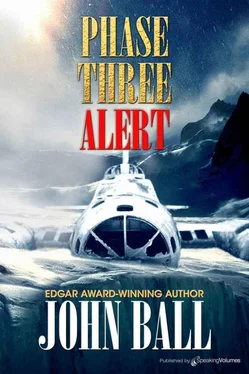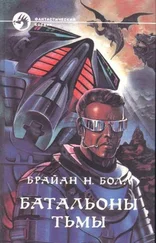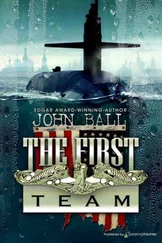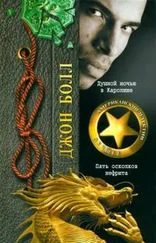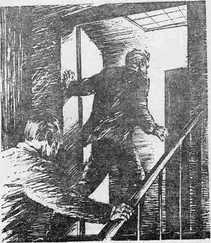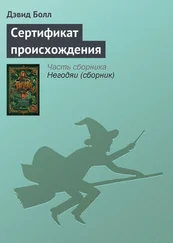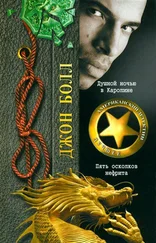He pressed the transmit button one more time and spoke to the helicopter that was now well below him. “Penguin to Jolly Two,” he said. “A nice pickup off the ice cap. Congratulations.”
Major Mulder replied. “Thank you, Penguin. We’ve had some valuable practice.”
The C-130, with its much greater speed, was the first to arrive back and swing into the Thule landing pattern. The weather situation had improved materially and phase conditions had passed. Jolly One put in an appearance five minutes later and settled down on the runway. Both aircraft received the same piece of news; it was at that moment touch and go at the hospital where the Bennett respirator was desperately needed; only the knowledge that that vital piece of equipment was being brought in as fast as the HH-3 could fly offered any encouragement at all. Lieutenant Kane had positioned the necessary ground vehicles well in advance of the ETA and Sergeant Ragan, of the Air Police, had provided an escort in the hope that it might save an additional two or three minutes.
As the HH-3 flew in with the medical personnel and the Bennett on board, Ferguson kept The Passionate Penguin above and behind her so that he could keep the lights of the helicopter constantly in view. If anything were to happen — which was extremely unlikely, but possible — he did not want to have to waste two minutes in reporting that fact and beginning another orbit.
Fortunately, the precaution was unnecessary. Jenkins did not quarrel with the heading being held, although he kept up his chart work like the professional that he was. The Thule beacon came in loud and clear and the ADF told him that he was on the right flight path. When the edge of the ice cap finally came, he could see the lights of Thule ahead and below.
Ferguson held his altitude to allow the Jolly to land first. It did so, cutting straight in across the field and settmg down almost directly in front of the operations building. The moment that the aircraft was firmly on the ground it was surrounded by people. The ambulance backed up, and there was frenzied activity.
Bringing up the rear, Ferguson flew toward the beacon and set up a proper instrument approach. He didn’t require the glide slope or any radar assistance; the runway was in plain sight, but he did everything according to the book. Gear and flaps down, he came in over the boundary lights, reminded himself once more that he was flying a tail-dragger, not a tricycle-geared aircraft, and held the Penguin off the runway as he slowed her down and let the tail sink into landing position. When she finally settled on, it was a picture-book landing and he knew it. After contacting ground control, he taxied up in front of Hangar 8, and at long last cut the switches. The Passionate Penguin came to rest and stood with stately dignity.
Colonel Kleckner got up a little stiffly. “I may catch hell,” he admitted. “If I do, it won’t hurt that we made the discovery. If we hadn’t…” He had no need to finish the sentence.
“Also, sir,” Ferguson added, “they might have some trouble proving that the Penguin can’t get off the ground. She flew through some pretty rough air today.”
“I’ve got a lot to do now,” the colonel said, and left the flight deck. The crew doorway was already open; through it he climbed down onto the ground.
At the hospital, the Bennett respirator was at that moment being delivered to the room where little Bebiane Jeremiassen lay immobilized, as still and silent as death itself. Ignoring his ordeal on the ice cap, Dr. Lindegaard connected the machine and checked it out. He had it ready in less than a minute. He wheeled it to the bedside and, with Markley’s help, switched the tiny patient onto the new and vastly more efficient machine. “How much longer would your portable unit have lasted?” the Danish doctor asked.
“We thought we were losing her twice within the hour before you got here. It was a matter of minutes.”
“I understand. Doctor, I wish to have you meet our nurses. They have been through quite a bit in the last many hours, but they are ready to begin work. Mrs. Toft will take the first shift. She is, I think, in a little better shape than Miss Morgensen or Mrs. Nielsen.”
“If Mrs. Toft can, it would be a great help. Captain Lyons will stay on watch; if anything is needed, she will know where it is.”
For five minutes the two doctors conferred on the condition of the little Eskimo girl. Dr. Lindegaard made a personal examination of her and then read the chart in detail. “There is no question whatever,” he said. “Your treatment was the only procedure to be followed. If she lives, it will be because of you.”
Markley shook his head, then he pointed to the Bennett. “Without that…” he began and then stopped.
“I wish to ask one question,” Dr. Lindegaard said. “We were discovered on the ice cap by a plane of your Air Force — by the flare light I read it. But, doctor, I cannot understand; I would swear that it was a B-17! I do not know much about airplanes, but that one is so famous.”
“So they flew it, did they? I hadn’t heard.”
Nurse Vibeke Toft, fresh in a starched uniform, came down the hall ready for duty. “Are you all right?” Markley asked.
The nurse answered in excellent English. “I am fine, doctor. It is agreed that I will watch for two hours, then Miss Morgensen will take over. That will give her and Helle time to eat and rest a little. Helle, Mrs. Nielsen, will take over four hours later, after a little sleep.”
As Debra Lyons began to brief her Danish colleague, Markley leaned against the wall, giving way for a moment to the fatigue that the strain he had been under had intensified. “Doctor,” he said, “when you feel up to it…”
Lindegaard put a hand on his shoulder. “Go, please, doctor, and get some rest. I will guard your patient. If an emergency comes, I will call you.”
Quite suddenly Markley felt that most of his remaining energy had drained out of his body. “I think that I will,” he said. “Thank you for coming. And thank God for the Bennett. Now that she’s on it, I feel a little better.”
Lindegaard nodded. “I think that you should. She is young and these Greenlander children are very sturdy and strong, even when little. She now has the best chance that it is possible to give her with what we know.”
Utterly weary, but hopeful, Dr. Herbert Markley walked up the corridor toward the place where he could lie down and rest.
In the center of the huge floor of Hangar 8, The Passionate Penguin stood in the position of honor. She had been wiped down, and the slight amount of soil that she had picked up on her underside had been washed away. Her fuel tanks had been topped, her oil had been checked and replenished, and she awaited the signal for further action. Only one noticeable change had taken place — a rescue “find” symbol had been proudly painted on her nose. It was her first earned decoration.
Outside, Thule Approach Control cleared a C-141 from McGuire to the tower frequency. The big jet airlifter came down the glide path, flared, greased on, and began a dignified taxi toward the place where a waiting signalman stood positioned on the ramp. When it had been spotted, the pilot cut the engines and a small reception committee of Thule personnel came forward. Colonel Kleckner was in the lead. He did not need to look at the two-starred plate displayed in the window to know that a major general was on board. Two staff cars rolled out and took positions just off the port wingtip.
The side door opened, there were a few seconds of delay, and then General William H. Miller deplaned briskly. He returned Colonel Kleckner’s salute and then shook hands cordially. “Good to see you, Jim,” the general said.
Читать дальше
